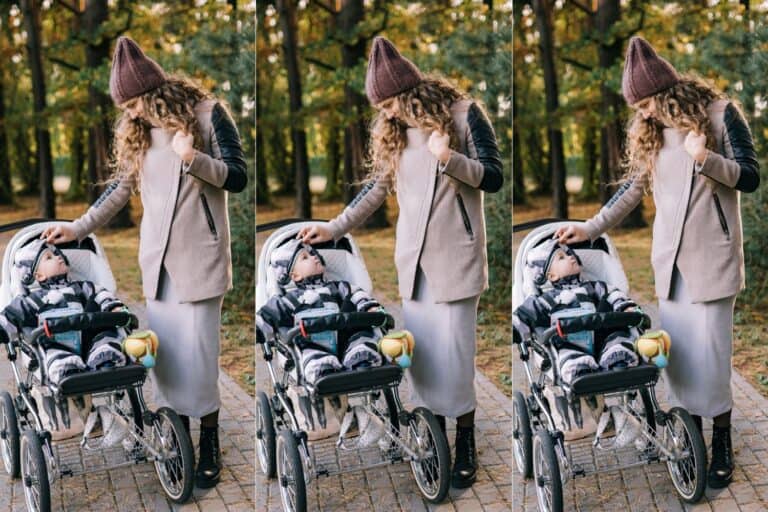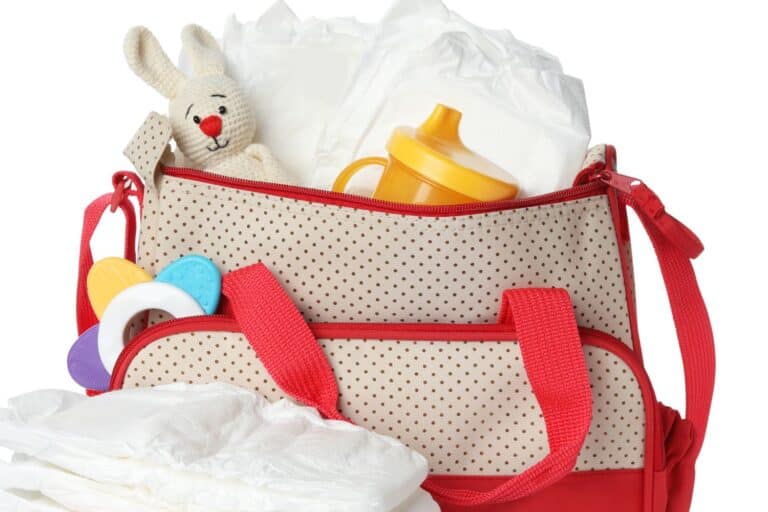Can you do purees and baby led weaning?

This post answers the question “can you do purees and baby led weaning”?
Note: Affiliate links may be used in this post. I may receive a small commission at no extra cost to you if you use my affiliate link. Full disclosure policy here.

Whether you puree or do baby-led weaning is a personal decision. Some parents choose to do a combination of both. purees can be a great way to introduce your baby to new flavors and textures, and they’re easy to make at home with a blender or food processor. Baby-led weaning, on the other hand, allows your little one to explore different foods on their own and develop their own preferences. Ultimately, there’s no right or wrong way to do it – it’s whatever works best for you and your family.
What is baby led weaning?
If you’re a new parent, you’ve probably come across the term “baby led weaning.” But what exactly is it? Baby led weaning is simply letting your baby feed themselves rather than pureeing food for them. When you puree food, you’re essentially pre-chewing it for your baby, which can make it harder for them to develop their own chewing skills.
With baby led weaning, on the other hand, your baby will learn to chew their own food, which can help them develop healthy eating habits later in life. Additionally, baby led weaning can help your baby learn to self-regulate their intake of solid foods, which can prevent obesity and other weight-related issues down the road. So if you’re thinking about starting solid foods with your baby, consider giving baby led weaning a try!
How do you use purees for baby led weaning?
Purees can be a great tool for baby led weaning. Here are some tips for using purees:
- Start with simple purees that are single ingredient and easy to digest. Some good options include: apple, pear, sweet potato, pumpkin, and squash.
- Thin purees out with breast milk or water until they are the consistency of runny yogurt. You can also add purees to foods like oatmeal or pancakes to make them more moist and easy to eat.
- Offer purees along with other finger foods at meal times. This will allow your baby to explore different textures and flavors and learn how to self-feed.
- Purees can be stored in the fridge for up to 3 days or frozen for up to 6 months. When you’re ready to use them, simply thaw in the fridge or microwave.
Do you skip purees with BLW?
For those who are unfamiliar, baby-led weaning (BLW) is an approach to solid foods where baby is offered finger foods instead of purees. The thinking behind it is that purees can delay self-feeding skills and that babies are more likely to eat a variety of foods if they’re able to feed themselves from the start.
There’s also evidence that BLW can lead to better eating habits in the long-term. While there’s no right or wrong way to introduce solid foods, skipping purees may be a good option for parents who want to try BLW. Of course, every baby is different, so it’s important to do what feels right for you and your little one.
[related post: The Ultimate List Of Best Baby Subscription Box – The Absolute Best Per Category]
What are the disadvantages of baby-led weaning?
Baby-led weaning has become increasingly popular in recent years, but it is not without its disadvantages. One of the biggest problems with baby-led weaning is that it can be messy. Babies who are eating pureed food can be neater, as parents can control how much food goes on the spoon and where it ends up.
With baby-led weaning, however, babies are in charge of how much they eat and where the food goes, and this can often result in a lot of spillage. In addition, baby-led weaning can sometimes be slower than pureed food, as babies have to self-feed and may not be able to eat as quickly. As a result, parents may need to be patient and prepared for a bit of a mess when they start their baby on solid foods.
What age do babies stop purees?
purees are a great way to introduce your baby to solid foods. They are easy to eat and provide a good source of nutrients. However, at some point you may want to start transitioning your baby to more solid foods. This can be done gradually by introducing purees with chunks in them, or you can try baby led weaning. This is where you offer your baby whole pieces of food to eat instead of purees.
[related post: The Cutest Nursing Necklace For Your Babe]
Babies typically start purees around 6 months old and transition to solid foods around 8-10 months old. However, every baby is different so listen to your baby’s cues and go at their own pace. There is no need to rush this process. purees can be a great way to introduce your baby to solid foods. They are easy to eat and provide a good source of nutrients.
However, at some point you may want to start transitioning your baby to more solid foods. This can be done gradually by introducing purees with chunks in them, or you can try baby led weaning. This is where you offer your baby whole pieces of food to eat instead of purees. Babies typically start purees around 6 months old and transition to solid foods around 8-10 months old. However, every baby is different so listen to your baby’s cues and go at their own pace.
How do you know when baby is ready to move from purees?
If you’re wondering how to know when baby is ready to move from purees to more solid foods, there are a few things you can look for. First, baby should be able to sit up unassisted and have good head control. They should also be showing an interest in what you’re eating and trying to grab food off your plate. If you want to try baby led weaning, you can offer finger foods at mealtimes and see if baby is able to pick them up and eat them on their own. If you’re not sure whether baby is ready for purees or finger foods, you can always ask your pediatrician for advice.
[related post: The 6 Best Diaper Caddy To Help Keep You Organized]
This post answered the question “can you do purees and baby led weaning”?
We hope you found this helpful! If so, show us some love in the comments below!
Other Posts You Might Like:
The Best Montessori Books For Parents & For Children






